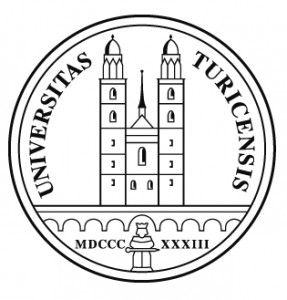University of Zurich (CH), Art History Department
Zurich: June 10-13, 2014
Deadline: 06 March, 2014
Contact: SommerschuleZH2014@gmail.com
 Summer School 2014: Spatial Relations (Raumgeflechte)
Summer School 2014: Spatial Relations (Raumgeflechte)
“Space is a practiced place.”
Following up on Michel de Certeau, the summer school looks at the multi-layered quality of space, and discusses its theoretical and practical implications. Analyzing the anachronistic and multi-directional relations among action, object and time, we aim to define concepts of space, and to understand their medium-specific significance in a media history of arts by means of looking at exhibition spaces, interiors, and international magazine culture.
Sections:
1) Ostentatious Spaces – Exhibition Displays in the 20th Century
2) Interior as Spatial Relation
3) Photographs on Pages
1) Ostentatious Spaces – Exhibition Displays in the 20th Century
The exhibition space as a contested place of experience is the focal point of this section. We are particularly interested in the influence of avant-garde art practices, architecture and media theory, as well as philosophical notions of the display on exhibition design during the 20th century in global perspective. In this regard we will depart from previous studies that predominantly grapple with the absorption of exhibition spaces by culture industry, or its role as a disciplining apparatus in the administration of modern life.
We invite contributions that address, among others, issues of the ostentatious quality of space (space as image), variations of display-culture, the feedback-loops between the experience of culture in exhibition spaces and their culture-generating qualities beyond concepts of the apparatus, the role of changing notions of perception in the natural sciences and their way into display-design, as well as the growing influence of design culture on gallery interiors. This section is as much about a critical investigation into the form of exhibition spaces through the lens of image science as it is about analyzing the multi-layered dynamics of influence between exhibition spaces and the modernization of life during the 20th century.
2) Interior as Spatial Relation
The particular interplay of architecture, furniture, and the social body constitutes rooms of the 18th century as interiors. This section thus focuses on the notion of the interior as a relational system. Setting forth from this concept of the interior as a network, it no longer suffices to analyze singe elements of 18th century rooms and their meaning as independent units; rather the focus needs to shift towards the various relations among architecture, furniture, and the subject. In this light, the interior is conceived of as an interface where culture-philosophical concepts and lived reality merge and reflect upon each other, as is evident in the paravent, the salon, or the enfilade.
This section aims to expand the art historical view on the interior by means of focusing on its interdependencies with aesthetic and cultural factors. Consequently, one may ask how, for instance, a boudoir can simultaneously appear as a room, a display, a representational unit, and as a concept? We call for contributions that focus on these relational implications of space, thus shedding new light on the notion of the interior in the 18th century. Topics may, among others, address the impact of the arts and crafts on the interior, and the conception of living space through devices such as boudoirs or fauteuils.
3) Photographs on Pages
Photographic images in magazines influence the visual culture of society, while at the same time magazines reveal changes in the self-conception of the photographic medium. This interrelation has been particularly evident and of importance for the discursive development of photography ever since the early 1970s. “Photographs on Pages” asks how magazines during the 1970’s and 1980’s apply photography and how they grapple with the medium’s ambiguous status between document and artwork. At that time, classical documentary photography is in crisis, and its representation in leading journals such as Life Magazine and Paris Match asks for new solutions. Concurrently, photography discourses shift the focus from questions that exclusively approach the indexical quality of photographs towards the medium’s self-reflexive potential.
This section looks at spatial implications and concepts of the photographic essay, the portfolio, or the insert, as much as it is interested in the layout and image-text relation all of which become evident in the chronologic, collective, and hybrid nature of the magazine. We ask for contributions that address the manifold visual and spatial concepts used to show photographs in magazines since the 1970s.
The department of Art History at University of Zurich announces its 4th International Summer School “Spatial Relations (Raumgeflechte)” (June 10-13, 2014). We invite PhD students and candidates to present their research and meet with fellow summer school participants and invited guest speakers during presentation sections, workshops, and evening lectures. The summer school is organized by PhD candidates of the doctoral program “Media History of Arts,” which was founded in 2009.
Concept and organization:
Dr. des. Sophie Junge
Nadine Helm, M. A.
Anika Reineke, M. A.
Joachim Sieber, lic. phil.
(PhD candidates of the doctoral program “Media History of Arts,” Department of Art History, University of Zurich)
Interested participants are invited to submit an abstract no longer than 400 words and a short CV via email to SommerschuleZH2014@gmail.com by Thursday, March 06, 2014. Please mention the section number you apply for in the email’s reference line. Conference languages: German and English.
We offer a partial traveling allowance.
Further information:
http://www.khist.uzh.ch/studium/doktorat/doktoratsprogramm-2.html
URL de référence : http://arthist.net/archive/6923

Leave a Reply
You must be logged in to post a comment.